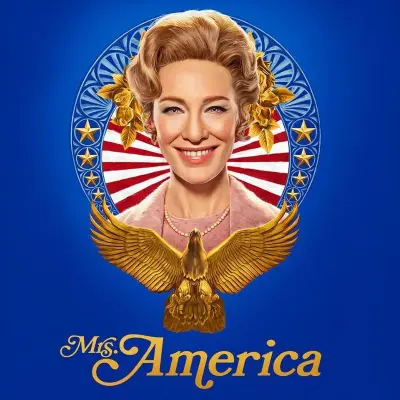Why does Mrs. America's fashion resonate in 2020?
-

"One of the most striking aspects of the show is how familiar most of the clothing semiology is," says Vanessa Friedman. "Despite how much things have changed, both in Washington and in what we wear, they have not, apparently, changed very much. And not just because the Twitterverse is suddenly full of users writing odes to (Gloria) Steinem’s aviators. Rather, it’s because the lines between sides are drawn so clearly by their unspoken uniforms and because the personal and political branding is achieved so effectively through consistent costume. Sound familiar? Never before would I have thought that 1973 and 2020 have so much in common. Yet it was only three years ago that there was a protest to demand women be allowed to wear sleeveless dresses in Congress." As costume designer Bina Daigeler put it: "I wanted people to see that we are not entirely over that time. We still have to fight for everything. We still use the same weapons." Friedman adds: "Looking at (Cate) Blanchett’s (Phyllis) Schlafly, in her pastel peplum suits, her silk scarves tied just so around her neck, her neat square-heel pumps and carefully coifed wings of hair, it is clear what she means. After all, her wardrobe effectively channels the 1950s Doris Day homemaker tradition, even while Schlafly’s own behavior (talk shows, debates, aggressive disinformation, exaggeration as a political tool) suggests an entirely different agenda.
And it is impossible not to be reminded of the women who populate the Trump White House — Ivanka Trump and Kellyanne Conway, among them; or to see, in the Schlafly cardigans, carefully draped over her shoulders, the echoes of Melania Trump’s similarly draped coats."
ALSO:
- Margo Martindale says she "was in the heat of it" during the Equal Rights Amendment fight in the 1970s: That's why, when Mrs. America came along, "it was almost like going to school and learning a part of history that I only had glimpses of," she says. "It's just been fascinating, and it's made me smarter, and it's made me appreciate those women more than I ever can tell you. They were warriors before warriors, you know what I mean? They built the fight — the fight that's not over, and the fight that started with such passion. We've got to finish it with passion."
- Phyllis Schlafly's daughter disputes Mrs. America's depiction: She says her mom was motivated by her family, not a hunger for power
TOPICS: Mrs. America, FX on Hulu, Bina Daigeler, Margo Martindale, Phyllis Schlafly, Costume Design
More Mrs. America on Primetimer:- There's Never Been a Better Time (Unfortunately) to Watch Mrs. America
- 15 Milestones That Defined Hulu's First 15 Years
- A Teacher is now FX on Hulu's No. 1 series, surpassing Devs and Mrs. America
- American Film Institute's Top 10 TV shows of 2020 include Bridgerton, The Mandalorian, Lovecraft Country and Ted Lasso
